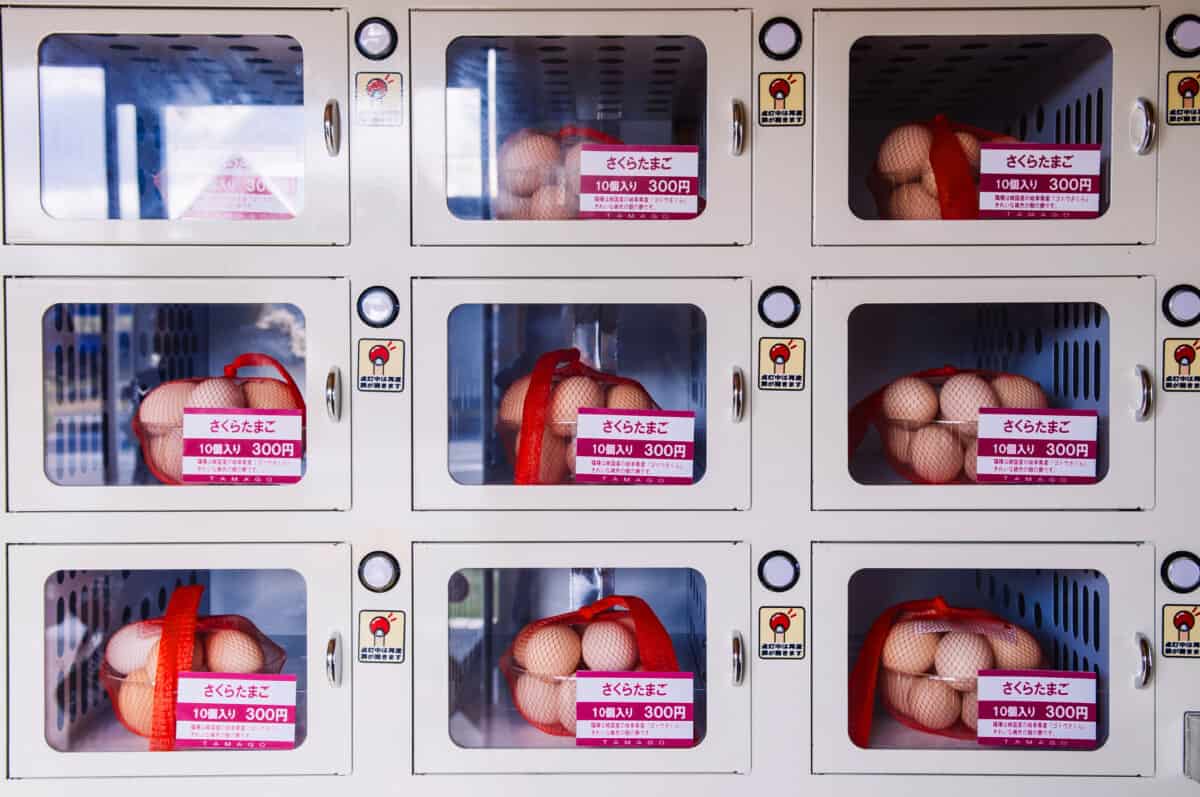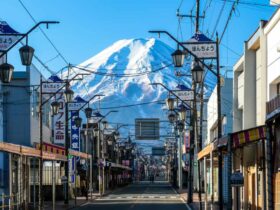Eggs are a major part of Japanese cuisine, especially raw ones. So, when people from western cultures visit, they avoid it out of fear of contracting salmonella or some other foodborne illness. But can you get food poisoning from eating raw eggs in Japan? In short, no, you will not get sick eating them.
It’s not that the Japanese have special chickens or that salmonella doesn’t exist there.
They simply treat their chickens a little differently and have stricter industry standards for their egg safety. But they’re delicious and you’d be remiss not to try at least one raw egg on any number of Japanese dishes.
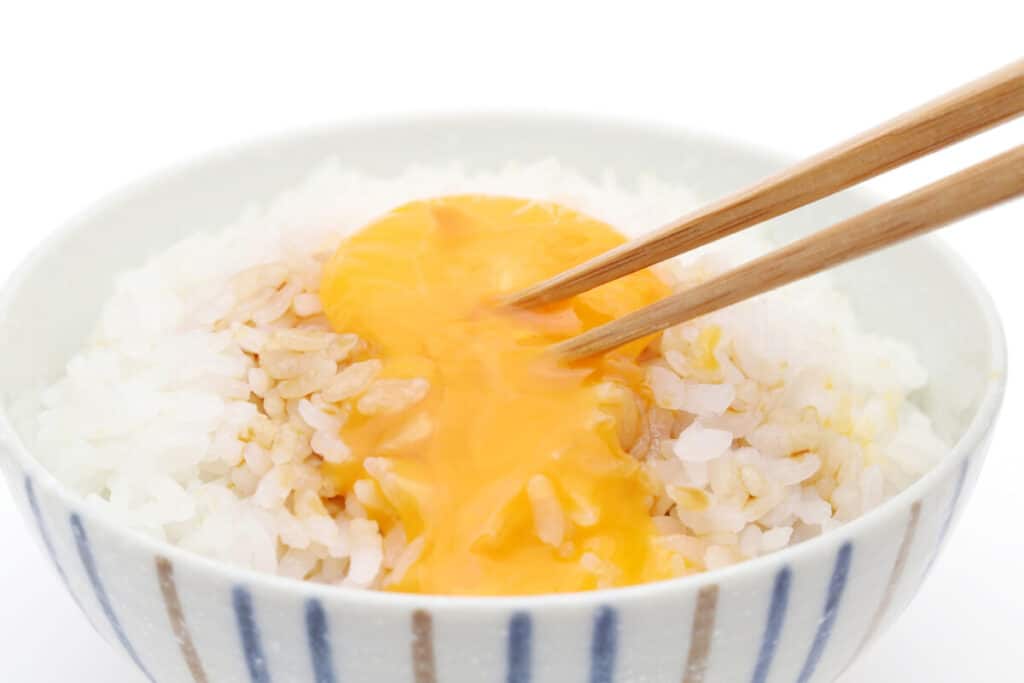
Western versus Japanese Eggs
Throughout the US, Canada, and Europe, everyone knows to avoid raw eggs at all costs. There has been a rash of outbreaks and poor agricultural practices that promote the development of salmonella and other food-borne diseases.
The Japanese, on the other hand, put a lot of effort into keeping their chickens and eggs pure and free of potential issues and contamination.
General Consumption
Consumption is different from the Japanese to that of Americans. The average family in Japan will eat an entire carton of eggs within a matter of days. But people in the US will keep eggs for weeks and the chance of salmonella builds up.
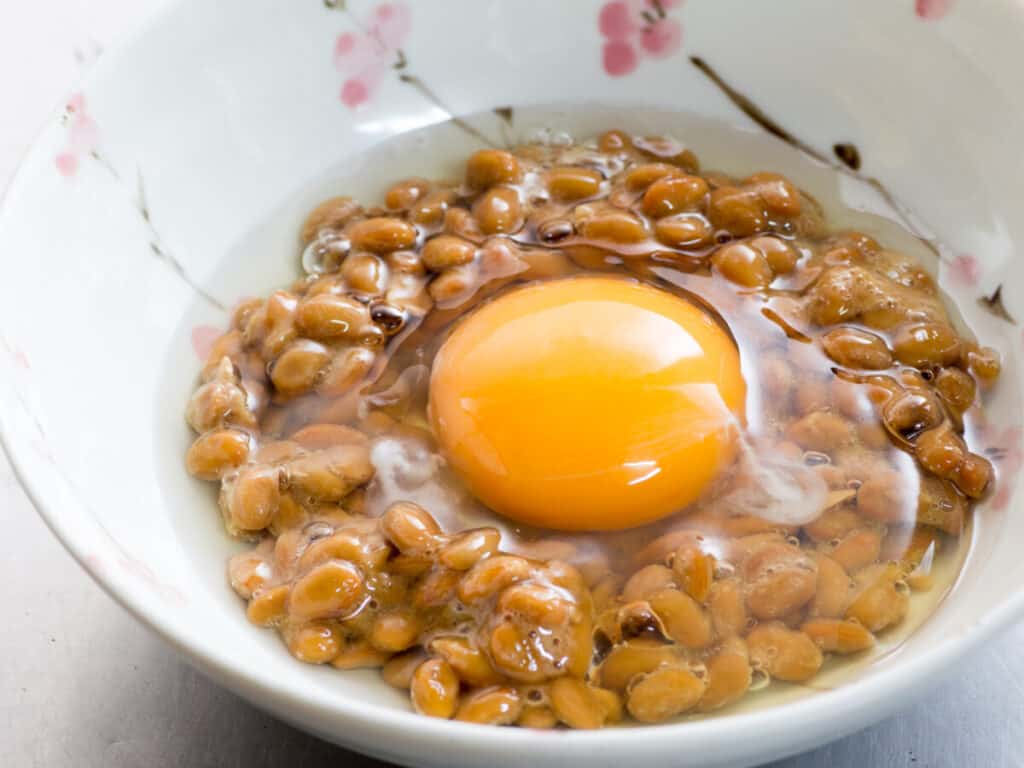
Part of this is due in part to the fact that at the grocery store, cartons of eggs come in six, whereas in the US they come in 12. Even so, the average adult in Japan eats 320 eggs a year.
This means they spend just over a month NOT eating eggs within a year. Therefore, eggs are important and they must be free of toxins, bacteria, and other diseases.
Eggs Are a Japanese Staple
The reason why eggs became so integral is that some traditional Japanese cuisine lacks protein and it can be a little lacking of needed protein.
Their solution was consuming more eggs. There are several instances in the country’s history where people suffered health issues due to poor protein in their diet. Plus, eggs spice things up in many traditional dishes.
Types of Japanese Dishes that Feature Raw Eggs
You will see eggs throughout Japanese cuisine, but it’s very common to see a raw egg resting on top of rice for breakfast in the morning. The following is just a small list of many common dishes where you will find raw egg included:
- Kimchi Tamago Gohan
- Natto (comes on top of rice and raw egg)
- Oyakodon
- Shoyu Zuke Ranou
- Sukiyaki (raw egg coating)
- Tamago Kake Gohan
- Tsukimi Udon
How the Japanese Are Able to Eat Raw Eggs
Part of the reason why the Japanese are able to eat raw eggs every day is due in part to their remote island location. This mitigates the transfer of foreign bacteria. Not that it can’t or hasn’t ever happened, but it’s rare.
Also, they have strict controls and regulations in regards to their chicken and egg safety. They are very meticulous and cautious about the distribution of eggs.
Each farm undergoes regular inspections along with frequent immunization of their chickens and checking the eggs for quality.
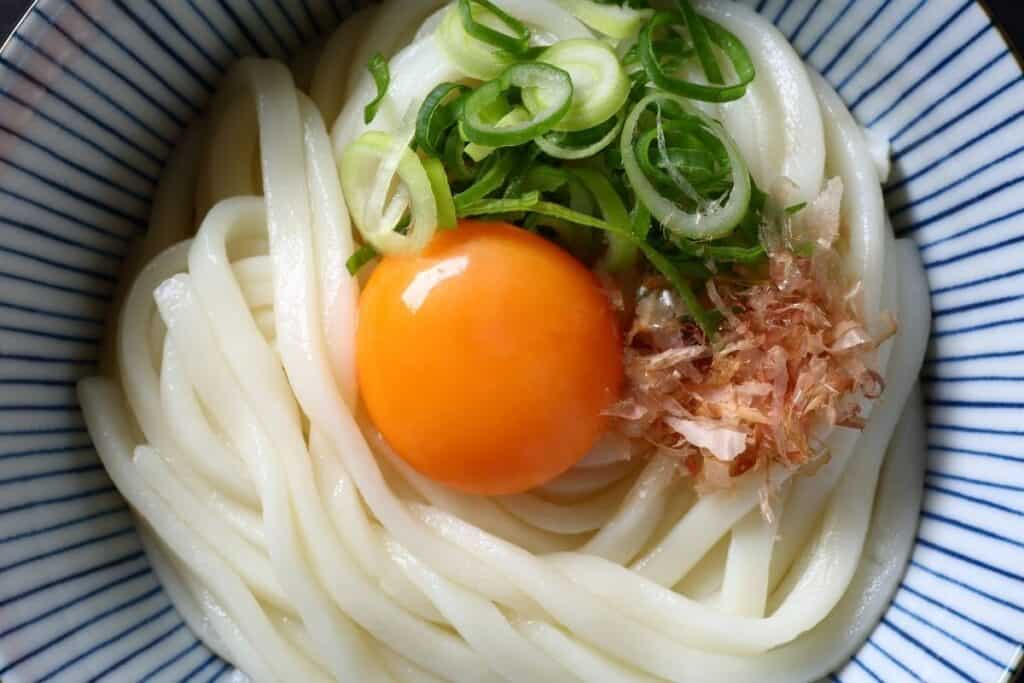
Eggs Source from the Same Farm
They even go as far as to ensure all eggs come from the same farm as their ancestors. This includes a chicken’s parents all the way up to great grandparents.
The chickens eat a special, organic diet to produce better eggs that are rich in nutrients. Doing this gives more contamination controls because regulators can trace back any issues if they arise.
Each Prefecture Has an Egg Farm
Another way they control the disease is by having chicken farms in each prefecture and they are located near each other as well as major roadways for fast distribution. Also, there are extra precautions in place to keep out birds, insects, and other animals.
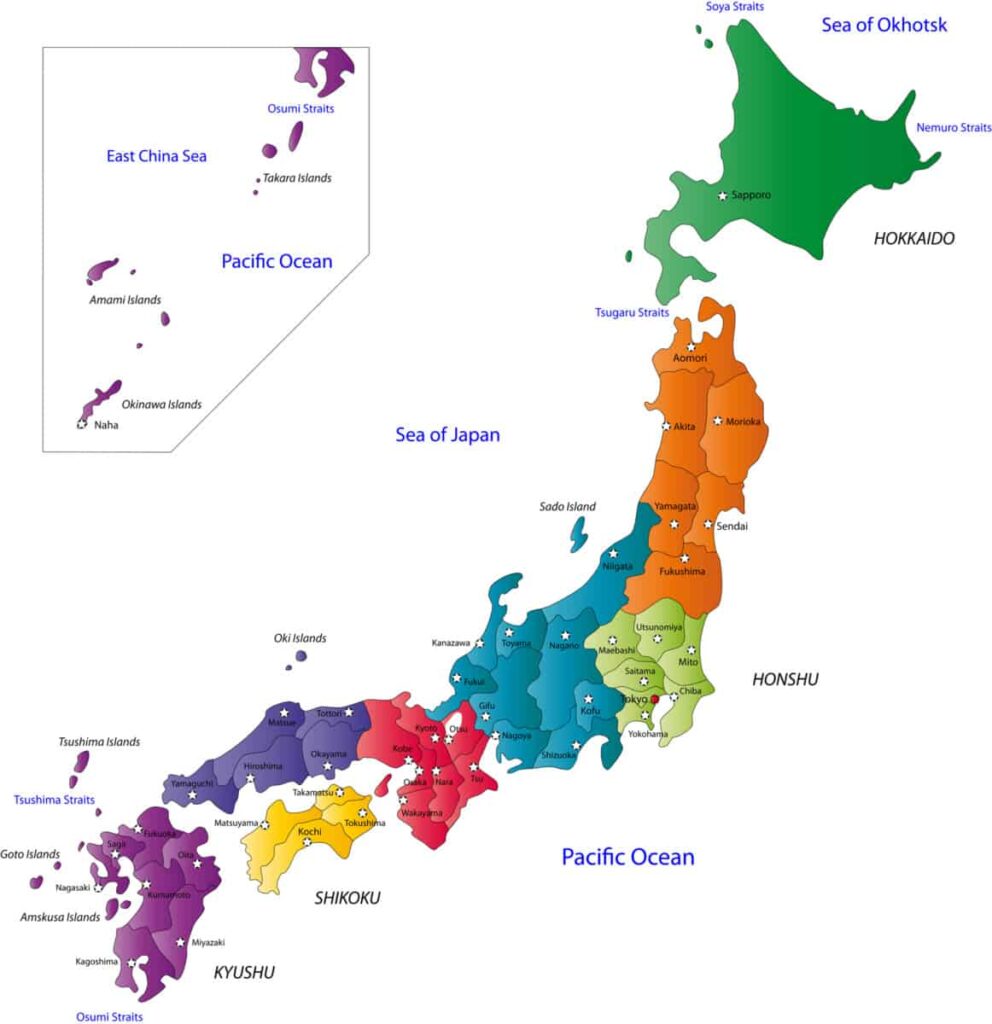
Farmers and Guests
The farm’s employees wear special uniforms before entering the production area. Also, only people with proper clearance can enter. This way they can closely monitor who comes and goes and decrease the chance of contamination.
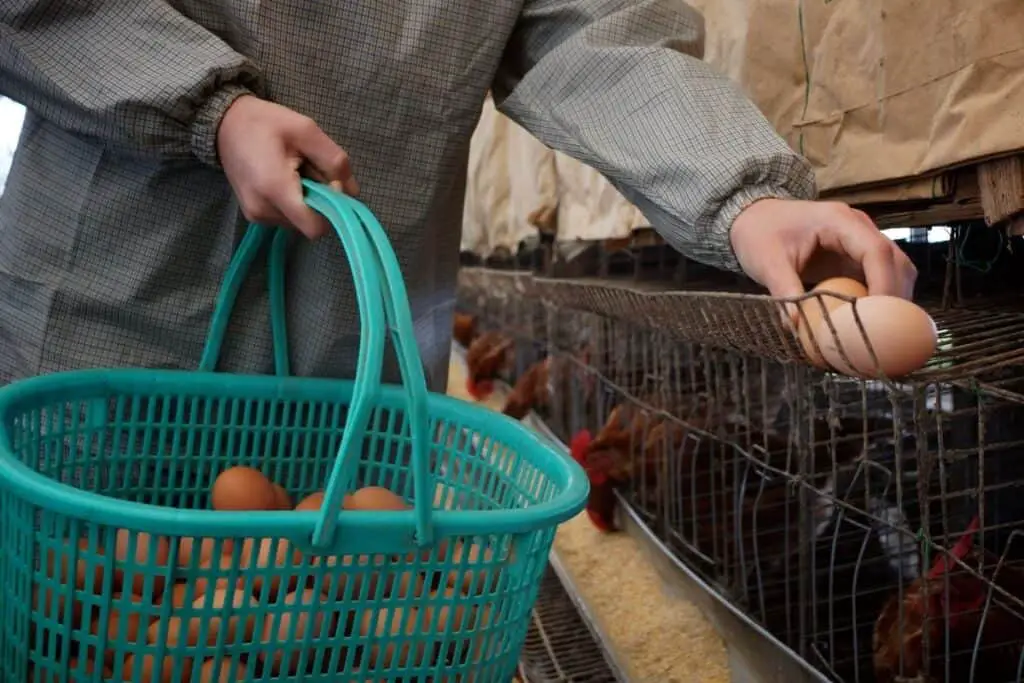
Eggs Undergo a Stringent Process
After collecting and producing a batch of eggs, they undergo thorough testing, washing, sterilization, and inspection.
If anything like dirt, cracks, or blood appears, they will go through this process several times before approving the egg for distribution. When there are too many imperfections, they dispose of the egg.
The farms incorporate state-of-the-art machines and technology that not only make it nearly impossible for an egg to slip through but also inspects, check, and evaluate the egg for bacteria.
Once a batch of eggs passes the high-tech inspection, they go out to distributors.
Eggs at Grocery Stores and Restaurants
In a Japanese grocery store, cartons of eggs are much smaller than in the US, with only about six eggs per carton.
Because the country is very aware of the risk of bacteria, stores sell them for very little cost. This helps them move off the shelves more quickly.
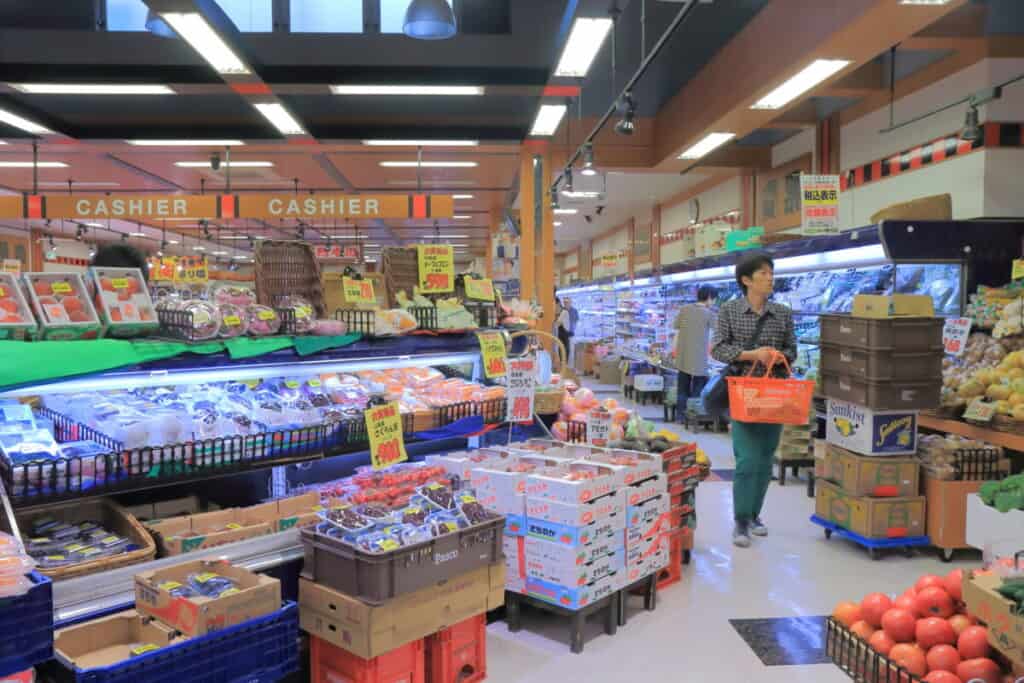
Restaurants in Japan usually buy their eggs fresh the same day they use them. This allows them to provide excellent food while avoiding health and safety violations.
There are even some restaurants that will undergo their own inspections of the eggs to guarantee customer satisfaction and safety.
Regular Government Inspections
Every 10 years, Japan’s Ministry of Agriculture conducts tests on salmonella outbreaks. They determine how often it occurs by collecting eggs from grocery stores from all over the country.
They test different farms, distributors, and establishments along with each egg for salmonella and record it. The last known test has shown salmonella was at 3% out of a total of 105,333 eggs.
Recent Problems and Scandals
However, it’s important to note that in 2020 a scandal became public after the Minister of Agriculture took bribes from farmers. That said, this was a localized problem with certain farmers and it hasn’t impacted the quality of eggs.
They are still safe to eat raw. But, in December of 2020, there was an outbreak of bird flu among newer farms across many prefectures and as always was quickly resolved to maintain the high safety standards.

